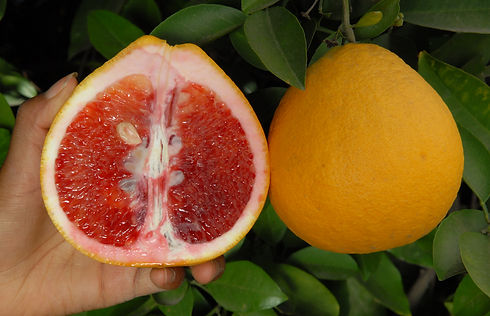Valentine Pummelo Trees for Sale
Citrus made easy for growers, nurseries, and distributors
The Valentine pummelo tree is a standout choice for citrus enthusiasts looking for a unique and flavorful fruit. Bred in the 1970s by Drs. Soost and Cameron, the Valentine is a cross of Siamese Sweet pummelo with a hybrid of Ruby blood orange × Dancy mandarin, part of the same breeding group that produced Oroblanco and Melogold. The fruit is large and often pyriform (pear-shaped), sometimes with a pronounced “neck.” It typically has medium-to-dark yellow rind when ripe. The flesh ripens from January to March in Southern California and shows a bright red color that resembles a red heart when cut—hence its name "Valentine."

See Other Specialty Trees By Variety
Valentine Pummelo Trees Your Way
From seed to container-ready.
How Our Valentine Pummelo Trees Are Different
At TreeSource, Valentine pummelo trees are grown on disease-resistant rootstocks from clean budwood sources, enhancing their resilience and overall health. This ensures that customers receive a quality tree with excellent potential for early and abundant fruit production. Our trees are also grown under strict CDFA and USDA nursery practices to meet high standards for vigor and quality.
If you’re searching for Valentine pummelo trees for sale, TreeSource can custom grow them for you if you meet our minimum order standards. Whether you’re a seasoned grower or new to citrus, the Valentine hybrid pomelo is a rewarding variety that combines ornamental appeal with delicious fruit. With proper care—including full sun, well-drained soil, and regular fertilization—your Valentine pummelo tree will thrive and provide years of enjoyment.
-CMYK-Logo.png)













